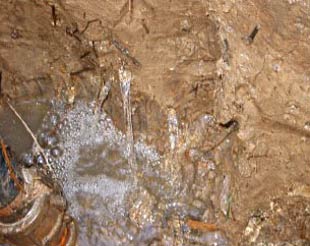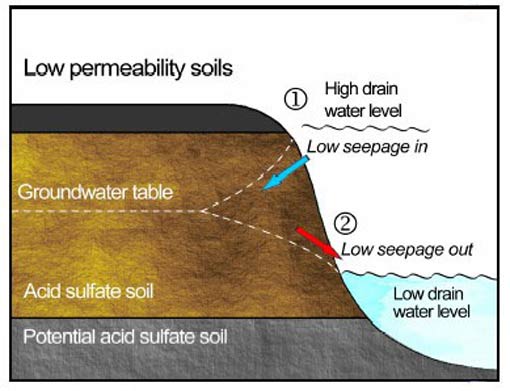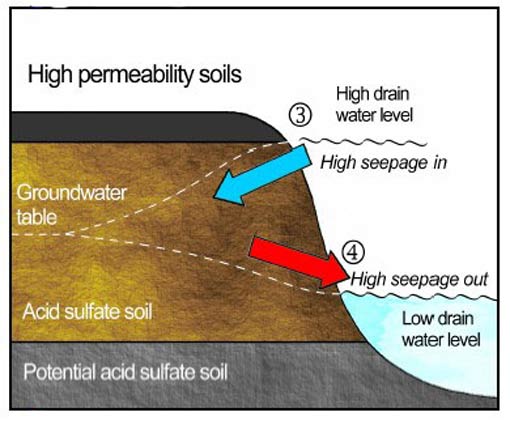
How leaky are your soils? Groundwater flow in acid sulfate soils
Australia’s coastal floodplains are underlain by large areas of acid sulfate soils (ASS). Water draining from ASS can severely pollute coastal rivers. Considerable effort is being made by the community to improve drainage water quality from these areas.
An important feature of ASS is their permeability (i.e. how easily water flows through the soil). Permeability is important because it affects:
- the rate that acid groundwater seeps into drains (See Managing drains to reduce acid export)
- the rate that salty drain water can seep into the soil beside the drain (See Managing salt water when opening floodgates).
The soil permeability and rates of groundwater flow in coastal ASS can vary by over 1000 times. The rate of groundwater flow will determine what management options you can use to improve drain water quality without adversely affecting nearby soils (See Managing salt water when opening floodgates for management options).
Soil physical properties
The physical properties of ASS determine their permeability. Large pores can occur in the soil from old root channels or from shrinkage cracks in the clay. The size, density and orientation of pores, and the connections between them, have a big effect on soil permeability (Figure 1).
The physical properties of ASS vary between sites. They also often change with depth from the surface. ASS layers close to the ground surface that periodically dry out usually have higher permeability than deeper soil layers which remain permanently wet.

Groundwater flow
The direction of groundwater flow depends on the differences in water levels, or the ‘groundwater gradient’. Water always flows from a high elevation towards a lower elevation. The rate of groundwater flow depends on the size of this gradient and the soil permeability. Features of groundwater flow in low permeability ASS are shown in Figure 2.

In low permeability ASS, the flow of water either from or towards the drain is usually confined to the first few metres next to the drain.
In very high permeability ASS, the flow of water either from or towards the drain is more rapid and can occur over larger distances (i.e. more than 50 metres) (Figure 3).

Indicators of high permeability
A reliable indicator of permeability is the rate at which a hole dug into the soil below the water table fills with groundwater. If the hole fills rapidly with groundwater (i.e. a few minutes) then you may have high permeability soils. Other indicators of high permeability ASS can include
- easily visible tubular pores on the side of drain banks. These may be seen after scraping away a clean soil surface on the drain bank.
- extensive, reoccurring bright orange stains from iron on drain banks.
What you can do
Seeing if your soils or drains have any of the indicators listed above is useful. However, the only way to be 100% sure of the permeability of your ASS is to have it tested by someone with expertise. This is especially important to do if you plan to open floodgates in an area with known ASS.
Various state and local government organisations have expertise in this kind of assessment and can be contacted for assistance.
Further information
For further information, advice and assistance on floodgate and drain management contact NSW DPI.
Citation: Johnston S, Floodgate and drain management on coastal floodplains leaflet 5: How leaky are your soils? Groundwater flow in acid sulfate soils. (NSW Agriculture: Wollongbar)

